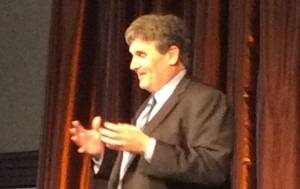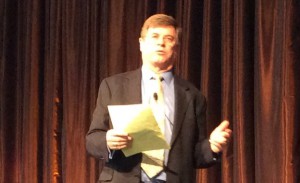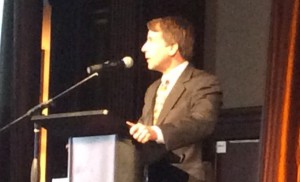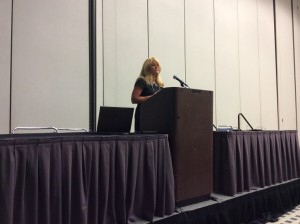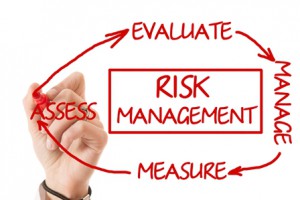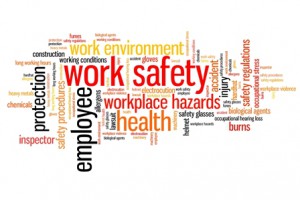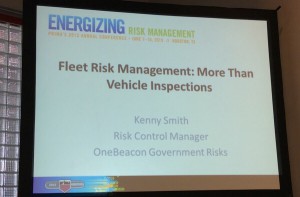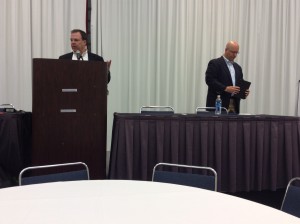Overview of California Workers’ Compensation System
At the 2015 WCIRB Annual Conference, Dave Bellusci, WCIRB Chief Actuary, presented an overview of California’s workers’ compensation system from the WCIRB perspective. 2014 was the fifth consecutive year of double-digit premium growth in California. This has been driven both by increased rates and economic growth. California currently compromises 27.1% of the nationwide workers’ compensation premiums. This is down from over 35% of the national premiums before the SB 899 reforms in 2004. The percentage of premium growth attributed to higher rates dropped significantly in 2014. In 2015, it is expected that the major driver of premium growth will be
(Read the full article…)
Insights from an Innovative Self Insurer
At the 2015 WCIRB Annual Conference, Bill Zachry, Group Vice President of Risk Management from Safeway, Inc., presented a session highlighting their approach to self-insurance. Safeway’s program is costing about 40% of what their industry peers’ programs cost. They focus on providing quality care to injured workers who will deliver superior outcomes. Their managed care programs are the main factor in the savings and superior outcomes achieved. They feel it is important that medical professionals make medical decisions rather than claims adjusters. Their nurse case managers made all medical decisions on the claims. They have a custom-developed medical provider network
(Read the full article…)
California WC System: A Regulator’s Perspective
At the 2015 WCIRB Annual Conference, California Insurance Commissioner Dave Jones discussed the state of California’s workers’ compensation system from his position as the regulator of all insurance issues in the state. California is the nation’s largest insurance market and would be the sixth largest insurance market in the world if it was an independent nation. There are two main focuses for the regulators. The first is consumer protection. The second is making sure appropriate insurance products are available in the marketplace that are properly licensed and administered. From the workers’ compensation perspective, California compromises approximately 25% of the entire
(Read the full article…)
Is Your Mobile Workforce Driving Up Your Exposure?
This session at PRIMA 2015 addressed the various risks related to having a mobile workforce and explored strategies for accident prevention. Speakers included Michael Fann, ARM-P, TML Risk Management Pool; Matt McDonough, CSP, Safety National. Due to technological advancements, the workforce is now more mobile than ever, but these devices can be distractions and can drive up your exposure. The leading cause of workplace fatalities is roadway incidents, followed by violence, slips, trips and falls, and contact with objects. In 2013, 1,099 people lost their lives to fleet incidents. Distracted Driving has caused 421,000 injuries and 3,328 deaths in 2012,
(Read the full article…)
Social Media and the Workplace
This session at PRIMA 2015 examined three areas of social media use that may expose government entities to risk, including personal use of social media, personnel decisions and employment references. The speakers included Matthew Fagiana, CSC, PSS, Lenoir City of Utilities Board and Sonya Guggemos, Minnesota Counties Intergovernmental Trust. Social media and the workplace, is it a concern? Yes, the public sector has higher expectations for their employees, especially those with higher profiles or those involved in critical public services. Public employees need to maintain credibility and have greater access to sensitive information. Employees may accidentally release private data through
(Read the full article…)
Civil Unrest: Is Your Entity Ready?
Acts of civil unrest are occurring everywhere and, whether or not these acts take form in strikes, protests or riots, public entities need to be prepared. This session at PRIMA’s 2015 Annual Conference discussed lessons learned from past civil unrest events and ways to treat or reduce the impacts that civil unrest might have on a public entity’s reputation, infrastructure, operations and future. The session was led by Renata Elias, Vice President, Reputational Risk & Crisis Management at Marsh Risk Consulting. Lessons Learned Your public entity can learn a lot from past events. Here are some commonly-known examples of civil
(Read the full article…)
Building Value in Risk Management
This session at PRIMA 2015 addressed how to build value in your risk management program, which can result in effective and self-sustaining results in building a strong risk culture and support for your risk management program. The speakers included Jack Flindt, Pinal County and Dean Coughenour, ARM, City of Flagstaff. What is one word used to describe a risk manager? Safety What one word describes management use to describe risk management? Necessary What one word would staff use to describe risk management? Helpful What is the role of risk management? To protect Risk management is about relationships; it is about
(Read the full article…)
Safety Committee Effectiveness
At the 2015 PRIMA Conference, this session addressed how to establish safety committees and explored the lessons learned to ensure committees are effective. The speakers included Sarah Perry, ARM-P, City of Columbia and Oscar Goedecke, CSP, Travelers Insurance. The purpose of a safety committee is to protect employees, the public and the environment. The safety committee can continuously try to improve loss prevention and reduction process. The point is to reduce injuries, illnesses, property damage, environmental harm and their associated risks. A safety committee can provide many benefits because it: involves more people/viewpoints fosters safety awareness promotes working together and communication
(Read the full article…)
Fleet Risk Management: More Than Vehicle Inspections
This session at PRIMA’s 2015 Annual Conference highlighted national auto claim trends and provided insights for reducing auto liabilities. The session was led by Kenny Smith, CSP, Risk Control Manager at OneBeacon Government Risks. Since nearly every public entity owns automobiles – whether they are police or emergency response vehicles, buses or passenger vehicles – automobile accidents are consistently one of the top-reported entity claims. Managing those automobiles, drivers and claims isn’t simple, but it can be managed. Accident Prevention 96% of auto accidents are caused by poor driver choices. Accident prevention efforts should include ways to identify and predict
(Read the full article…)
Risks of Scholastic Club Activities
At the 2015 PRIMA Annual Conference, Charles Gfeller from the firm Seiger Gfeller Laurie LLP and Mike Otworth from Genesis Management & Insurance Services Corp presented a session titled “Managing the Risks of Scholastic Club Sports”. The focus on this presentation was the case law surrounding the issue of the duty to supervise students engaged in both sports clubs and other non-sports club activities. Elementary & Secondary Education cases: Munn v Hotchkiss School, 24 F Supp. 3d 155 (D. Conn. 2014) This case involved an exclusive private school. The courts indicated in the ruling that it would also apply
(Read the full article…)

